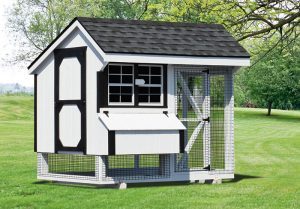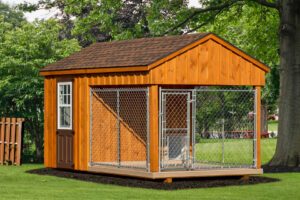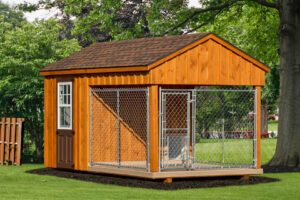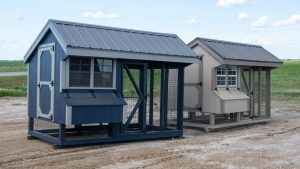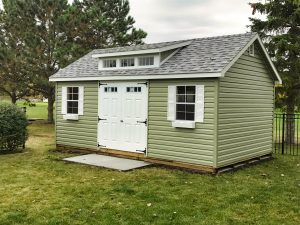A Guide to Raising Chickens – Chicken Coops, Care, & More
In the modern Covid-19 era, people have been forced to adapt to many changes. Although it’s been difficult, humans are resilient and have found new ways of coping. At this point, you might expect me to start praising the wonders of modern science and technology but in fact, this brand-new method of coping is actually very old. I am thinking of chicken keeping.
The lack of availability of resources, including food, has pushed people towards more sustainable ways of getting food. This has led to a recent increase in chicken keeping. And honestly, it’s hard to argue with it. At least your chicken coop won’t close down due to Covid-19 restrictions. Besides the sustainable aspect of chicken raising, chickens can also provide companionship for those long days of quarantining.
At this point, you might be thinking, “This sounds like a fantastic idea! I’ll go buy some chickens right now!” While I love the enthusiasm, I strongly recommend that you do a little thinking before you dive headfirst into a sea of chickens (interesting word picture…). Raising chickens can be relatively time-consuming, at least at first, and there are few things to consider.
Things to Consider Before you Decide to Raise Chickens
If you are seriously considering chicken keeping, there are few things to think about.
First, you need to check if you are actually allowed to keep chickens where you live. Depending on your location and whether you own or rent, there may be some people you need to get permission from before starting your chicken career. Visit this page to check out the chicken laws & ordinances in your area.
Second, you need to decide if you actually have the time to care for chickens. Chicken keeping requires a daily commitment so if you travel, you will need to find a babysitter. If you don’t know anyone willing to do that for you, do yourself and your future chickens a favor and don’t look for a future in chickens.
Third, if you are able to check off the two above requirements, then you need to consider where you will keep your chickens. Fortunately, they don’t take up much space. A small 6-chicken coop with a run can easily fit in a 10×10 area. So as long as you have a backyard, you should have space.
These are the three most important considerations when you are thinking of getting into chicken keeping. However, there are lots of other questions you most likely have. So, here are answers to some of the most common chicken keeping questions.
Should I keep a rooster with my hens?
A common misconception people have is that you need a rooster in order for your hens to produce eggs. This is false. Hens will produce eggs, whether or not a rooster is present. So, unless you are planning on hatching your eggs, you do not need a rooster. In fact, it is often recommended that you don’t have a rooster as he can often be irritable and cause more trouble than good.
How Much Does Keeping Chickens Cost?
It’s important to note that you shouldn’t get into chicken keeping in order to save money. If you regularly buy organic eggs, you can most likely break-even but it is almost impossible to beat mass produced egg prices from grocery stores. Without considering your initial expenses for a coop and chickens, you will most likely pay between $10-20 per month for food as well as an additional $10 per month for random expenses. However, there are ways to cut expenses. This could include allowing your chickens to roam on your property as well as producing your own chicken feed.
What are some good chicken breeds?
There are lots of good options backyard chicken breeds rather than overwhelm you with a long list, here are our top three picks:

Rhode Island Red – This breed of chicken is known for producing an above average number of eggs.
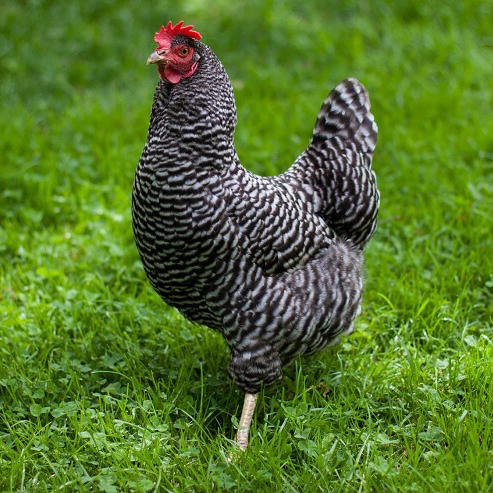
Plymouth Rock – This breed is great at egg-laying and is known for its friendly personality.
Araucana – This breed has a unique tuft on its face and is known for the beautiful blue eggs it lays.
How many chickens do I need for a family of 4?
It’s hard to give an exact answer to this question but with a little bit of math, I’ll give you a rough estimate. You can expect the average hen to lay approximately 200 eggs per year during its prime. This of course varies depending on the breed. If you have 5 hens, that is 1,000 eggs per year. If you divide 1,000 eggs by the total number of days in a year, 365, you get 2.74 eggs per day. If you’re whole family eats eggs every day, then 5 hens probably won’t be enough. But if you only eat eggs once or twice a week, then 5 hens will probably be plenty
With the preliminary questions out of the way, we’ll move onto the most important step in getting preparing to adopt your chickens: setting up a coop.
Setting up a Chicken Coop
A chicken coop is probably the most important tool for raising chickens. It provides them with shelter from bad weather, protection from predators (including house pets), and a place for them to lay their eggs. Plus, it looks really cute in your backyard.
You have several options when it comes to choosing home for your chickens. There are plenty of DIY chicken coops out there. Just take a look at Pinterest. You could also convert an old building or shed into a chicken coop with some effort. Personally, I recommend that you simply purchase a chicken coop rather than trying to make one yourself. Most coops are fairly affordable and already have all the features your coop will need like nesting boxes, roosts, good lighting and ventilation, etc.
Hopefully that provides you with some good direction in choosing a coop. But, if you still have questions, here are my answers to some common coop related questions.
Is it necessary to have a chicken run?
It definitely recommended that you allow your chickens some freedom to roam outside of their coop. This is healthy for multiple reasons. For one, it gives them a little variety in their diet because they can scratch around for insects. Another reason is that while they scratch around outside, they can pick up small pieces of rock and grit which is important for chickens’ digestive systems. One way to give your flock this freedom is to simply allow them to wander around your property. If you do this, it is important that you are there to oversee them so that they don’t wander off or fall prey to predators. As an alternative, a run allows chickens some freedom to roam and scratch while still being protected. If you don’t have the time or desire to spend an hour or so each day letting your chickens out to play, I strongly recommend you get a coop with a run.
How do you add a run to a chicken coop?
Some coops do not come with a chicken run. Fortunately, adding a run to a chicken coop is very simple. There are plenty of places that sell pre-built runs for between $100-300. Also, building your own run is fairly simple. There are plenty of DIY videos out there so look around. Here’s one that I found to be very helpful:
How many chickens can you put in an 8×12 coop?
The general rule of thumb for the number of chickens in a coop is 4 square feet per bird. An 8×12 coop would be 96 square feet. So, if you divide 96 square feet by 4 square feet per bird you get 24 chickens. This same math can be done with any size coop. For example, a 6×8 coop would hold 48/4=12 chickens.
How to position a chicken coop?
The most important things to look for when considering how to position your chicken coop are level surfaces and protection from the wind. Flat surfaces make your coop more stable and make it less likely that predators can find a crack to slip through. Wind protection is especially important for small coops because they can be vulnerable to storms and could be blown over on if not placed properly. Another thing to consider when positioning your coop is the direction its windows are facing. Try to position your coop so that maximum sunlight can reach the windows throughout the day. This can greatly improve your flock’s quality of life.
Caring for Chickens
We’ve already described throughout this post most of what will go into caring for you chickens. But in an effort to make your life easier and for purposes of consolidation, I’ll list out what will be your regular to-do list as a chicken keeper.
Daily To-Do:
- Water at least once per day. Your chickens should never run out of water so do whatever you have to ensure they have a steady water supply.
- Feed at least once per day. If you plan to regular feedings of small amounts of food, try to feed them 2-3 times per day. If you plan on have a steady supply of food always available to them, one daily refill should be enough.
- Gather eggs once a day. Keep in mind that most hens don’t start laying eggs until 18 weeks so this might something you need to worry about, depending on the age of chickens.
- Do a daily sweep to make sure all is well. This should include looking for holes in your coop or run as well as ensuring none of your hens look sick. If you notice your chickens acting strangely, this could be an indication that something is wrong.
Less Frequent To-Do:
- Once a week, you will need to replace the bedding in your coop. Some of the best options for bedding include wood shavings or straw.
- Once a year, it is recommended that you do a deep clean on chicken coop.
- Purchasing feed and bedding from your local co-op as often as necessary.
These are the major things you as a chicken owner will need to do. Inevitably, other things will come up that require special attention. Here are answers to a few common questions related to caring for chickens.
Can I leave chicken coop door open overnight?
It is not recommended that you leave your chicken coop open overnight. In fact, unless your coop has a run, it’s best not to let your flock run free unless you are present. This is largely because chickens are towards the bottom of the food chain and there are plenty of predators out there that would be happy for a snack.
Do chicken coops need to be insulated?
Most people recommend that you do insulate your chicken coop. This is mainly to keep your chicken warm during the cold winter months. So, if you live in a place that doesn’t get very cold during the winter, you will most likely be able to survive without insulation. Some alternatives to insulation include heat lamps as well as wind blockers.
What We Offer
Hopefully, you found this helpful as you consider raising chickens. For those of you who have already decided that this is something you want to do, feel free to stop by our chicken coop page and take a look at the coops we have to offer. We know you won’t be disappointed.



